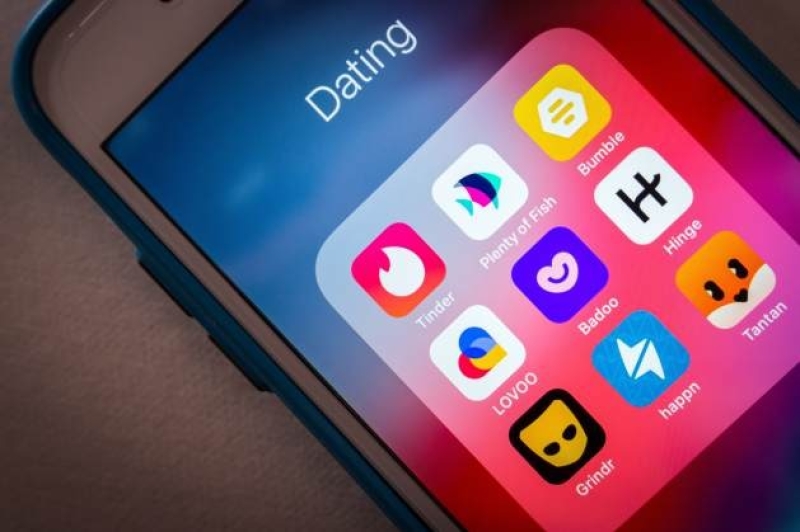- Experts see Tarique's political future on optimistic note |
- UN Chief Urges Leaders to Curb Warming, Protect Planet |
- Tk 3.38cr Project to Restore Sonadia’s Biodiversity |
- Global Emissions Fall Slowly, Experts Urge Renewables Push |
- Hurricane Melissa: UN Appeals $74M to Aid 2.2M in Cuba |
Modern Dating Technologies: Opportunities and Challenges

Dating apps generated over $6 billion in 2024, with North America accounting for 50% of global revenue, Europe 23%, and adoption climbing across Asia-Pacific and Africa.
Dating websites, mobile apps, social networks, and cell phones offer numerous opportunities for dating, developing relationships, having encounters, and finding partners, with more people relying on these platforms. However, modern technologies, with their scale, speed, and convenience, have also introduced dating challenges for both men and women.
These challenges include unrealistic expectations, emotional disconnection, feelings of inadequacy, superficiality, choice paralysis, decision fatigue, misrepresentation, privacy concerns, harassment, stalking, threats, scams, situationships, catfishing, orbiting, benching, pocketing, love bombing, cushioning, ghosting, submarining, and breadcrumbing.
Dating has evolved significantly from face-to-face social encounters, often within family-centric processes, to today’s technologically driven individualistic experiences. In the past, and continuing in some traditional societies, courtship was typically a structured process focused on finding a suitable marriage partner for family building.
The estimated total number of people worldwide using dating apps, which has become the most common way couples meet, is approximately 400 million, or about 5% of the world’s population. On an average day, over 25 million people are actively using dating apps, including casual browsing and online conversations.
In contrast, many people now view dating as a means to discover themselves and experience personal growth, rather than solely as a path to marriage. These individuals prioritise personal development, career advancement, and diverse experiences before settling down. With casual dating becoming more accepted, there is also a greater focus on authenticity and forming genuine connections.
Dating apps, websites, and mobile phones, combined with the growing use of generative artificial intelligence, chatbots, and virtual reality, have contributed to the rapid rise of online dating. These technologies offer unprecedented access to a diverse array of people, breaking down geographical and social barriers.
These developments have made dating both easier and more complicated, contributing to new norms, behaviours, expectations, benefits, and frustrations. Among dating app users are those seeking romance or long-term partners, while others seek casual encounters without emotional ties.
Many people struggle to form genuine connections when interactions are confined to online messaging. The abundance and convenience of dating options can make it difficult to commit, leading to a cycle of searching for the “next best person.” Social media platforms encourage users to highlight the best parts of their lives, creating unrealistic expectations and disappointments.
The global dating app market reportedly generated more than $6 billion in revenue in 2024. North America remains the largest market, contributing 50% of global revenue, followed by Europe at 23%, with adoption climbing in the Asia-Pacific and Africa regions. Projections indicate global revenue could reach nearly $9 billion by 2030.
The number of dating app users, usage patterns, and social norms vary significantly by country due to cultural attitudes toward dating, relationships, and technology. In 2024, China had the largest number of dating app users at nearly 83 million, followed by the US with approximately 61 million, India with 27 million, and Brazil with 17 million.
Among single populations, the usage of dating apps is much higher: 45% in North America, 30% in Europe, and 25% in Asia. Guidelines and behaviours for using dating apps vary based on gender, age, experience, and social norms. Approximately 62% of users are men, with the proportion rising in some regions.
Gender differences influence motivations and experiences on dating apps. Men often pursue casual encounters and easy communication, while women prioritise safety and long-term relationships. Shifting societal attitudes and the feminist movement have created more egalitarian relationships but also new expectations.
In terms of age, the largest group of dating app users, about 35%, are under 25. Older users, 55 and above, represent around 10% but are increasing. Around one-third of relationships now begin through dating apps, with 10% of partnered adults in the US meeting their spouse online, and 20% among adults aged 18–29. In the UK, over a quarter of couples married between 2017–2023 met online.
Moreover, more partnered adults, particularly in Latin America and Western countries, are choosing to cohabit without formal marriage.
Dating patterns today are significantly different from traditional face-to-face encounters. Modern dating is a complex, multifaceted experience shaped by culture, technology, and evolving social norms. While these technologies provide opportunities for connecting and building relationships, they also present challenges, requiring new approaches to privacy, communication, and emotional engagement.
Joseph Chamie is a consulting demographer, former director of the United Nations Population Division, and author of numerous publications on population issues.

